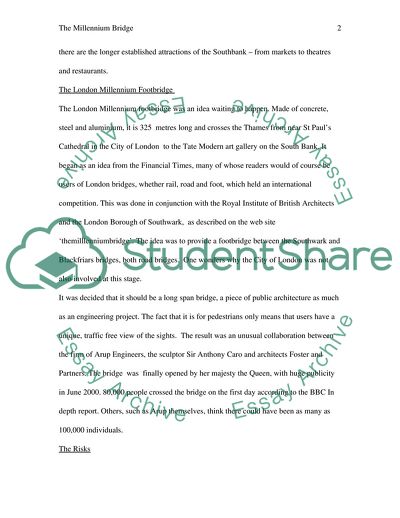Cite this document
(The Millennium Bridge Projects Case Study Example | Topics and Well Written Essays - 2774 words, n.d.)
The Millennium Bridge Projects Case Study Example | Topics and Well Written Essays - 2774 words. Retrieved from https://studentshare.org/architecture/1742989-millennium-project-a-report
The Millennium Bridge Projects Case Study Example | Topics and Well Written Essays - 2774 words. Retrieved from https://studentshare.org/architecture/1742989-millennium-project-a-report
(The Millennium Bridge Projects Case Study Example | Topics and Well Written Essays - 2774 Words)
The Millennium Bridge Projects Case Study Example | Topics and Well Written Essays - 2774 Words. https://studentshare.org/architecture/1742989-millennium-project-a-report.
The Millennium Bridge Projects Case Study Example | Topics and Well Written Essays - 2774 Words. https://studentshare.org/architecture/1742989-millennium-project-a-report.
“The Millennium Bridge Projects Case Study Example | Topics and Well Written Essays - 2774 Words”, n.d. https://studentshare.org/architecture/1742989-millennium-project-a-report.


